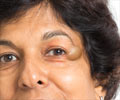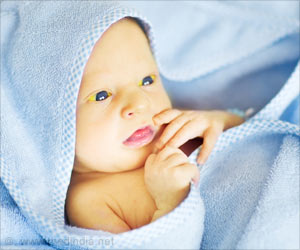A common type of brain lesion that is usually harmless, but with a risk of rupture or bleeding is arachnoid cysts.

What Factors Increase the Risk of Ruptured Arachnoid Cysts? Arachnoid cysts are benign (not cancerous) fluid-filled sacs that develop between the brain and the arachnoid membrane covering it. Most arachnoid cysts are "primary," that is, present from birth. They are relatively common, estimated to be present in about 1 out of 40 children.
With modern brain imaging studies, arachnoid cysts are often detected "incidentally"—during imaging tests performed for another reason. Although the cysts usually cause no harm, if they rupture (break open) or bleed, they can cause potentially serious problems requiring emergency treatment.
In their study, Dr. Riva-Cambrin and colleagues sought to identify risk factors for rupture and bleeding in children with arachnoid cysts. Fourteen children with ruptured cysts treated at the authors' hospital from 2005 to 2010 were matched to 28 children with known cysts but not rupture or bleeding.
The 14 ruptured/bleeding cysts accounted for six percent of all arachnoid cysts detected at the authors' hospital. The patients were ten boys and four girls, average age six years. Most children with ruptured/bleeding cysts had headache and other symptoms related to increased pressure within the skull (intracranial pressure).
One important risk factor was larger cyst diameter. Rupture and/or bleeding occurred in 69 percent of cysts measuring five centimeters or larger, compared to 17 percent of smaller cysts. Risk was estimated to be 16 times greater for cysts of five centimeters or larger.
Findings May Aid in Patient Counseling Some previous reports suggested a higher risk of arachnoid cyst rupture or aneurysm at higher altitudes. However, the rupture rate at the authors' Salt Lake City hospital appeared no higher than at hospitals at lower elevations.
As more children with arachnoid cysts are identified, neurosurgeons need the best possible information on risk factors for rupture or bleeding. The risk that an arachnoid cyst will rupture or bleed has been estimated somewhere between two and five percent. Because most cysts are still unidentified, the true risk is almost certainly even lower.
The new results suggest that larger cysts and recent head trauma are key risk factors for arachnoid cyst rupture or bleeding. The researchers hope their findings will be useful in discussing the risks and follow-up for the growing number of children discovered to have arachnoid cysts.
Dr. Riva-Cambrin and colleagues acknowledge that the increased risk of cyst rupture/bleeding after mild head trauma is "potentially alarming." But they note that such injuries are extremely common in children's daily lives. While parents should be aware of this risk, the authors believe there's no reason to restrict sports or other activities for most children with arachnoid cysts.
Source-Eurekalert
 MEDINDIA
MEDINDIA




 Email
Email










